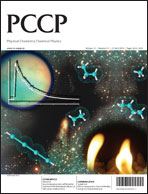It has been suggested that Rydberg gas atoms are involved in conducting electricity through a steady state flowing afterglow (FAG) discharge plasma (R. S. Mason, D. J. Mitchell and P. M. Dickinson, Phys. Chem. Chem. Phys., 2010, DOI: 10.1039/b918079f). From known properties of Rydberg atoms, a statistical model is developed here to find the distribution of levels (principal quantum number n) occupied in such a hypothetical Rydberg gas. It behaves non-ideally at positive column plasma densities, predicting 30 < n < 150, peaking at n ≈ 85. These values depend on assumptions concerning the power of n dependency of ‘pressure ionization’ and the free charge density. The occupied states are very long-lived and almost completely separated from the low n states by the low probability of intermediate levels. The effects of Rydberg gas (NR) and free charge densities are examined. The gas can exist in a deep free energy well (>120 kJ mol−1 below ionisation level when 1010 ≤ NR ≤ 1011 atoms cm−3) but this is approximately 11 kJ mol−1 higher than that of the equivalent free ion-electron gas; therefore if it exists in preference to the classical form of the plasma, it is controlled by kinetic factors. A mechanism is suggested by which this could occur. Thus, whilst ionization by high energy electron impact occurs at the Cathode Fall–Negative Glow (NG) boundary as usual, excitation of Rydberg atoms becomes more probable, by electrons slowed by collision and deceleration at the opposite NG-Positive Column (PC) plasma boundary. The atoms become stabilized after passing into the PC, by collisionally induced (nlm) mixing of states and the removal of free charge by charge transfer (and hence the passage of electric current through the Rydberg gas). The coupling of Rydberg states with the ionization continuum is poor; therefore, if the rate of their charge transfer is greater than that of their ionization, the Rydberg gas will remain relatively charge free and hence stable when it is conducting a current. When applied to the FAG plasma, the model provides a self-consistent interpretive framework for all its electrical, mass spectrometric and chemical behaviour. The effect on the optical spectroscopy of these plasmas is considered briefly.

You have access to this article
 Please wait while we load your content...
Something went wrong. Try again?
Please wait while we load your content...
Something went wrong. Try again?


 Please wait while we load your content...
Please wait while we load your content...